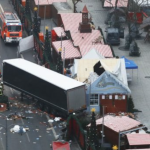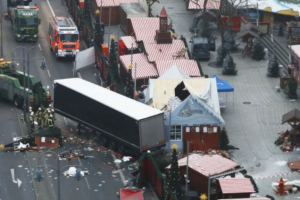Apart from the exchange of accusations between Russia and Ukraine, and the multiple condemnations of the international community, the explosion of the Ukrainian hydroelectric plant will have a high human, economic and environmental cost. The Ukrainian president, Volodímir Zelensky, was blunt in describing the tragedy: “it is an environmental bomb of mass destruction.” These are some of the short and long term repercussions.
An announced catastrophe, with inconceivable consequences. The partial destruction of the Nova Kakhovka hydroelectric plant in the Kherson region of Ukraine has escalated the conflict in Ukraine to a new state. Images of tons of liters of water spilling out of control and inundating everything in its path have gone around the world, as Ukrainian military forces help evacuate residents from areas near the controlled Dnipro River in the eastern part. by Russian troops.
And it is that the conflict has crossed a new red line. This “terrorist” act, according to Kiev, constitutes a war crime as dictated by the Additional Protocols to the 1949 Geneva Convention: “Dams, dikes and nuclear power plants may not be the object of attack, even when those objects constitute military objectives, if such an attack could cause the release of dangerous forces and the consequent serious losses among the civilian population”, reads article 56. A fact that could establish the culprit, in the event that an investigation is carried out to determine who caused damage, before the International Court of Justice.
Beyond the exchange of accusations between Moscow and kyiv about the cause of the detonation of the dam, controlled by Russian forces, and the multiple condemnations of the community and international organizations In what the majority qualifies as an “atrocious act”, the repercussions are already beginning to be felt and will extend over time.
It is not only about a military coup that can change the flow of the conflict, when Ukraine would be about to launch its great counter-offensive, but also from a humanitarian, economic or environmental point of view. It already directly affects the Ukrainian population in the region, but also those people who are under the control of the Kremlin forces in the areas unilaterally annexed by Russia, such as the Crimean Peninsula.

Power and drinking water shortages in southern Ukraine
The infrastructure was built by the leaders of the Soviet Union and today the Dnipro River, which supplied the water, acts as a kind of natural front line between the areas controlled by Kiev and Moscow.
António Guterres, Secretary General of the United Nations, said Tuesday that it is a “monumental humanitarian, economic and ecological catastrophe.” The importance of the dam – one of the largest in the world in terms of its reservoir capacity: about 18 cubic kilometers of water – lies in the supply of electricity, irrigation and drinking water for the entire southern region of Ukraine, including Crimea, whose dependency is 85%.
About 40,000 people live in the immediate vicinity of Kakhovka. This makes the Ukrainian authorities fear that there will be a great shortage of energy and drinking water for its population, some 16,000 people in the areas under its control, which could generate new massive displacements of Ukrainians to other parts of the territory.
Fears of the floods claiming lives are very present and the leader of the Kherson region denounced that at least eight villages were completely under water. For now, no fatalities have been declared, but the authorities of both countries in conflict have carried out the evacuation of almost a hundred towns near the river (more than 17,000 people). “Every hour more and more water arrives. It is very dirty,” said a neighbor from Nova Kakhovka.

An underwater agricultural region
In addition, the affected regions are characterized by providing grains to the Ukrainian territory and other countries, which could generate a new food crisis in countries of Africa or the Middle East. Much of the Ukrainian economy depended on its agriculture before the war, being one of the largest exporters of grain abroad. This Tuesday, due to the attack, world wheat prices rose by 3%, raising concerns about the possible interruption of the Ukrainian supply of wheat, barley, corn or sunflower oil.
Ukrainian farmers used the water from the reservoir to irrigate their crops and crops; only a fifth was intended for consumption. Some experts point out that, since the start of the conflict in February 2022, farmers have lowered their production. “For the most part, a lot of that land has been out of production, which is understandable. But it is a serious gap in terms of what is affecting infrastructure and other things, at least in that region,” Joseph Glauber, a researcher at the International Food Policy Research Institute, told the AP news agency.

Incalculable ecological damage: “an environmental bomb”
The Ukrainian president, Volodímir Zelensky, was blunt in his description of the tragedy: “It is an environmental bomb of mass destruction.” Added to the human and economic cost, the environmental damage caused by the overflow of millions of tons of water would be irreparable.
“The impact of the floods we will feel not just for weeks or even months, but for a long period of time,” Ukrainian Environment Minister Ruslan Strile predicted, announcing that some 150 tons of oil leaked from the dam machinery. into the Dnipro River with the dam breaking, and another 300 metric tons of oils could spill.

The fauna and flora of Ukraine are also at risk. Mykhailo Podolyak, Zelenskyy’s senior adviser, said that “thousands of animals and ecosystems will be destroyed in the next few hours.” The rupture of the dam will drag chemical materials underground and the damage can be seen for decades to come, as well as damage to the Black Sea Biosphere Reserve, a nearby Nature Park.
The flow of fresh water into the Black Sea could also harm fisheries and the general ecology of the northwestern part of the sea, experts say. “This huge reservoir is going to empty and the shallows upstream are going to dry up,” causing significant ecological damage to aquatic vegetation and wildlife that depended on that water, says Mark Mulligan, professor of Physical and Environmental Geography at King’s College London.
The mud left behind by the floods, according to analysts, will also take years to clean up. “Based on the experience of similar incidents around the world, a very large area would be affected and the hazardous material would spread all over the area which would affect the productivity of agriculture,” Mohammad Heidarzadeh, a civil engineer at the University of of Bath in Great Britain.

Another risk of the floods is the detachment of underground land mines, hidden on the banks of the river by the troops of both sides, and which could be carried away by the torrent of water. Zelensky said his government had information that Russia had mined the dam last year: “There may come a time when there is an explosion.” The United Nations also warned about this fact, warning of possible explosives that will create new dangers for areas that were considered safe.
After concerning developments following the destruction of the #Kakhovka HPP dam, I will be leading the next rotation of our @IAEAorg Support and Assistance Mission to #Zaporizhzhya NPP (ISAMZ) next week with a reinforced team. Crucial moment for nuclear safety. https://t.co/7fcfsRzUKu
— Rafael Mariano Grossi (@rafaelmgrossi) June 6, 2023
What about Zaporizhizhia?
The focus is also on the largest nuclear power plant in Europe, Zaporizhzhia, just over 100 kilometers upstream, located on the reservoir of the dam, which supplies the plant’s cooling systems. The plant is under the control of the Kremlin troops.
For now, the head of the International Atomic Energy Agency, Rafael Grossi, minimized the risk of a nuclear tragedy and pointed out that the reservoir has enough water for several months. Grossi said the IAEA will “quickly” verify the level of the pond, used for essential cooling of the nuclear plant’s reactors.
“The absence of water in the cooling systems for an extended period of time could cause the melting of the fuel and the inoperability of emergency diesel generators,” the agency statement said.
With AP, Reuters and AFP













